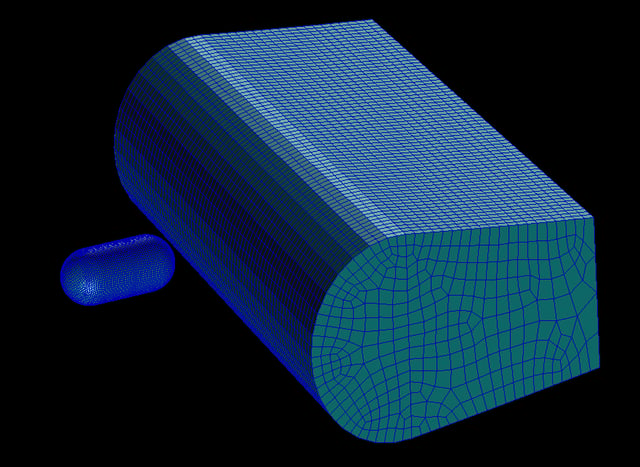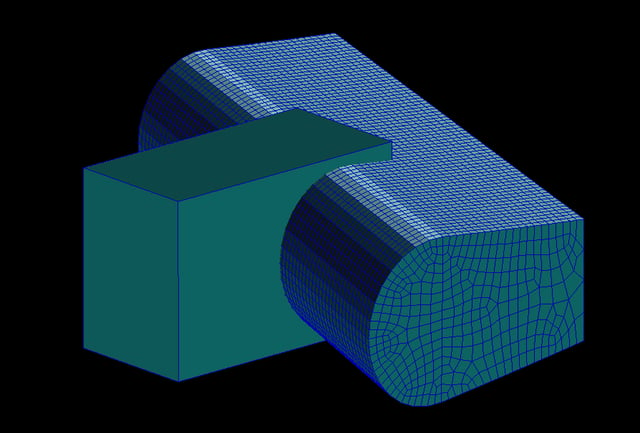A recent emergency landing by an Air France A380 aircraft inspired me to this blog article. Birdstrike is a standard consideration for any air vehicle but not an easy thing to model accurately with regular FEA software. The events are typically short duration, involve the failure of materials and a loading complicated by secondary impacts as the bird fragments.
One simple way to model this is using Fluid Structure Interaction, with the bird treated as a very viscous, jelly-like fluid. Dytran, from MSC Software, makes this kind of simulation very easy to set up.
Dytran has a general coupling algorithm to interface an eulerian fluid domain with a lagrangian structural domain. We start with an FEA model in Nastran format, in this case a simple model representing the leading edge of a wing structure along with a surface mesh representing the initial outer surface of the blob representing the bird:

We then need to define the envelope in which the fluid can exist. This is as simple as defining the origin and XYZ dimensions of a cuboid:

We define a coupling condition that relates the fluid volume to the mesh of the wing in which it is optional to have a failure of the wing skin resulting in penetration by the fluid. We also use the mesh of the ‘blob’ to define the initial conditions of the bird (its extent and initial velocity).
Dytran uses an explicit time integration solution. This means it simulates the event in time steps based on the speed that stress waves could travel across the smallest element in the model. This often leads to very small time steps if you are not careful with the consequence of huge result files to post-process. Dytran supports parallel processing to reduce the runtime for large models.
Post-processing the results for this simulation you can see the effect of the ‘splatter’ as the blob hits the wing. This is a simple example with a relatively coarse mesh where I have used solver settings to turn off small fractions of fluid as they form to simplify the solution, hence the disappearance of the fluid over time.
These models can be much more complex. Below is a rotating fan where the impact dislodges a blade that in turn impacts the containment ring.
This technology lends itself to other scenarios where predicting loads, particularly transient loads, due to fluid affects both internal and external are difficult. For example:
Sloshing of fluid in containers:
Aquaplaning of tyres:
And the effects of blast/explosions:
Now, this type of simulation is not something that the average user or department is doing full time, so the availability of Dytran within the MSC One token licensing system means you can call upon this resource when needed using the same licenses as are supporting your day-to-day structural, mechanism and CFD requirements with Nastran, Adams, and Cradle.
If you are interested in more on this, please get in touch
.png?width=139&height=70&name=DTE-Logo%20(4).png)

